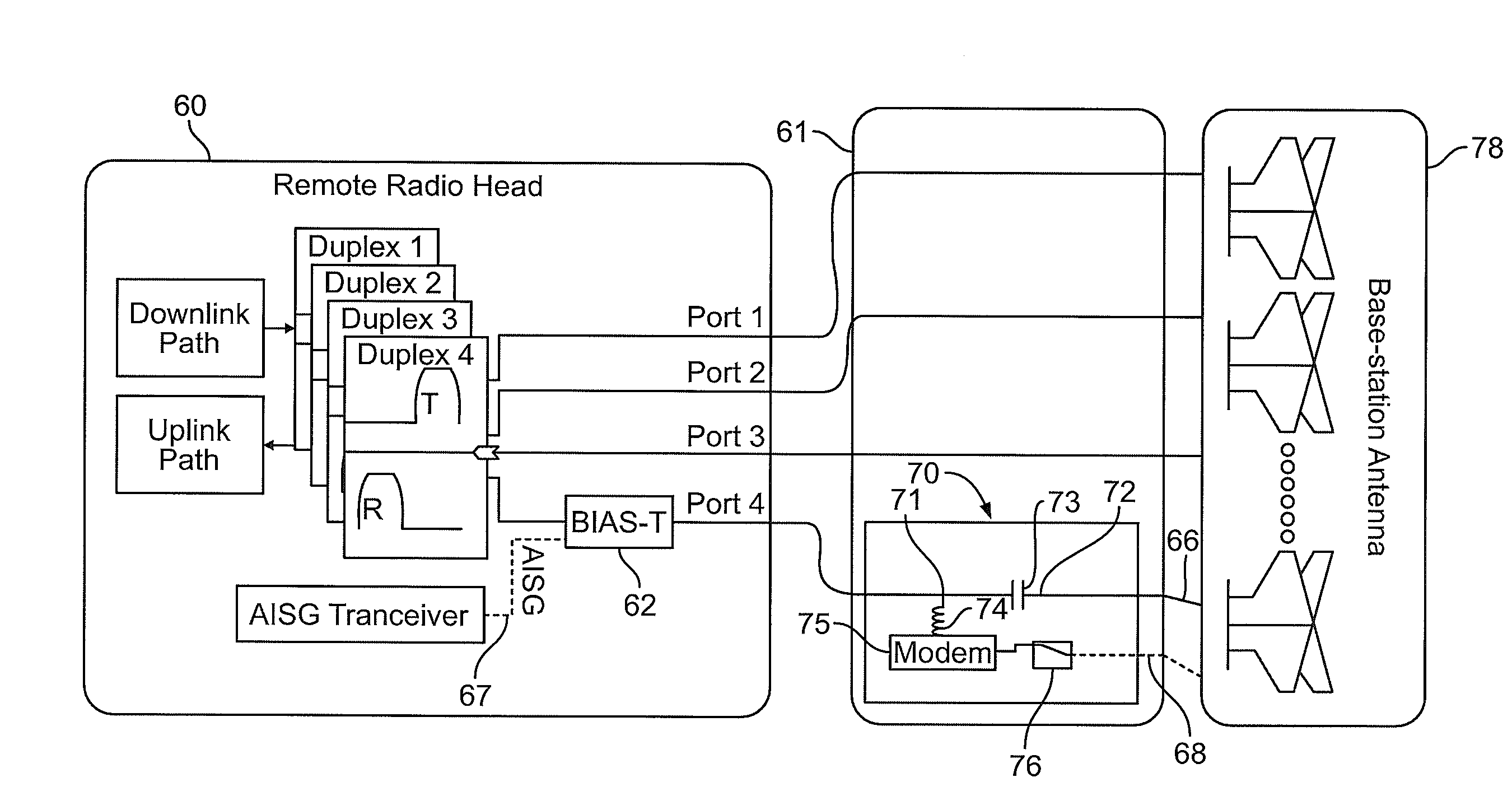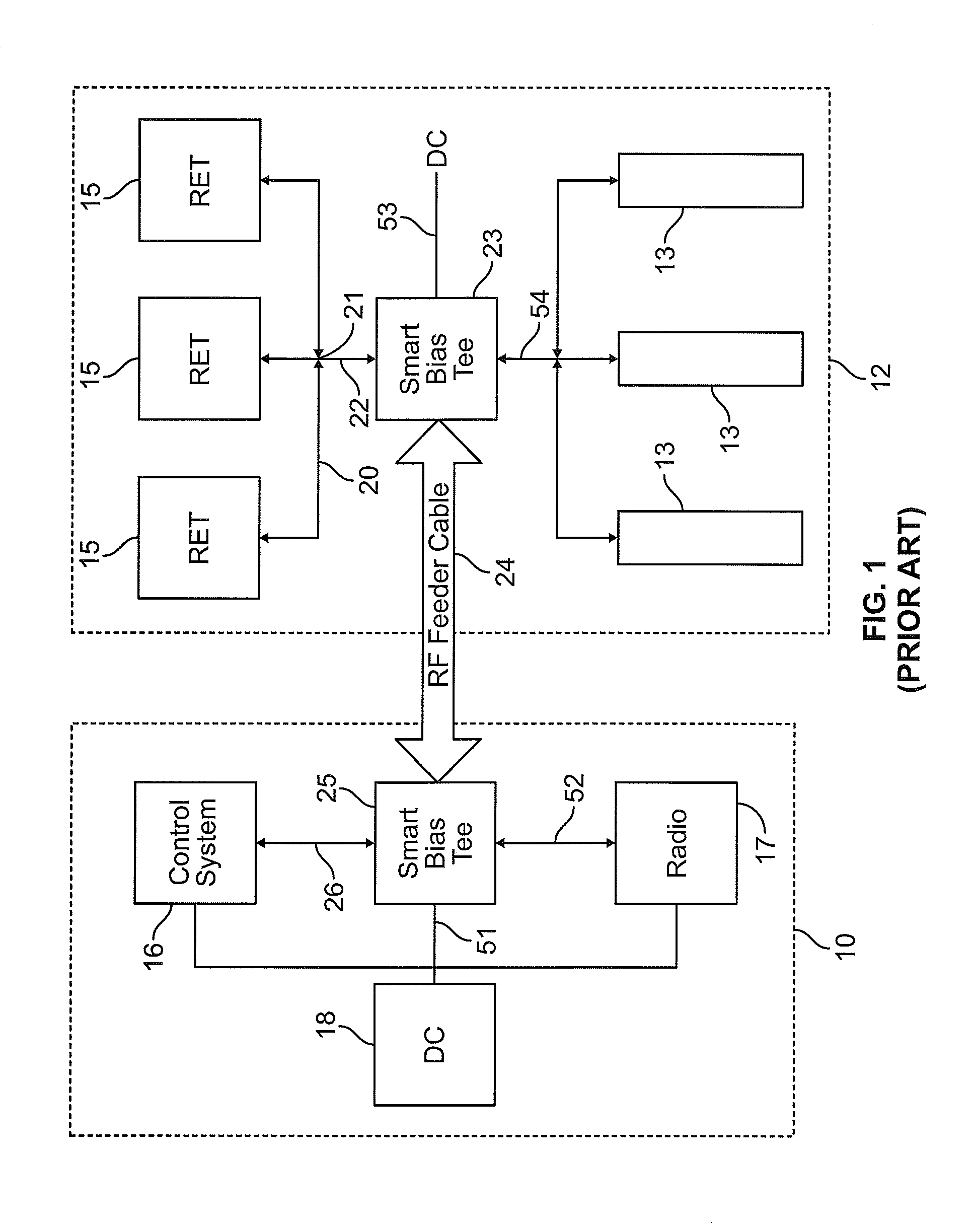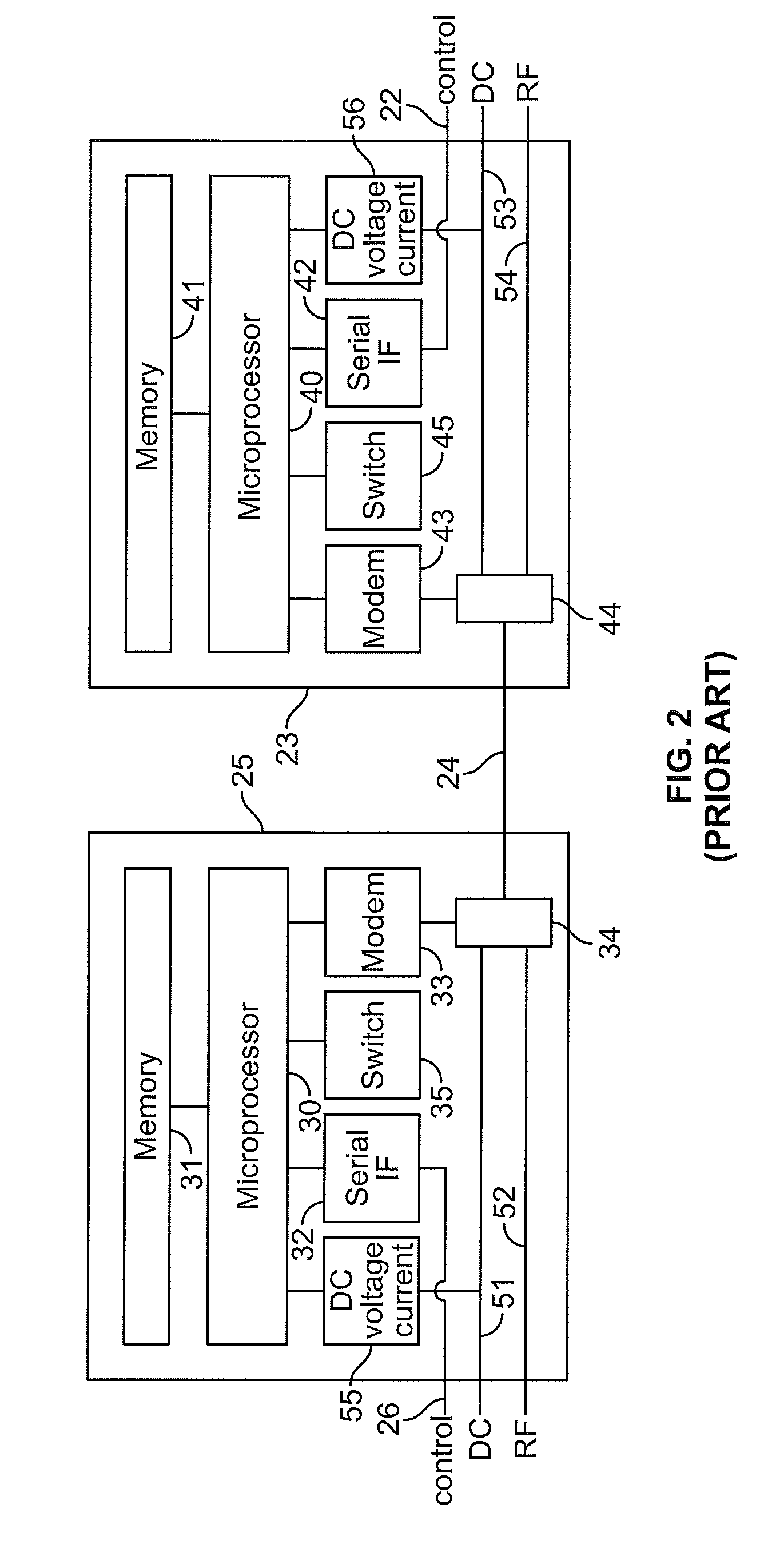Input selective smart bias tee
a smart bias and input technology, applied in the direction of antenna details, antennas, electrical equipment, etc., can solve the problems that conventional smart bias tees cannot be used to convey power to tower-mounted equipment using such connectors, and the control signals of tower-mounted equipment become more complex with multi-band antennas
- Summary
- Abstract
- Description
- Claims
- Application Information
AI Technical Summary
Benefits of technology
Problems solved by technology
Method used
Image
Examples
Embodiment Construction
[0017]A wireless communications Base Station is illustrated in FIGS. 7 and 8 and can include a Remote Radio Head 60, a Interface 61 including an Input Selective Smart Bias Tee 62, and a RET Antenna 63 having an AISG controller 64. The Input Selective SBT 62 includes an RF Input 65, an RF output 66 to the Antenna 78, an AISG Input 67, and an AISG Output 68. While “input” and “output” are used herein with reference to a control data flow from the Remote Radio Head 60 to a RET Antenna 63, a person of ordinary skill would understand that the data transmission is bidirectional, and that data also flows from the RET Antenna 63 back to the Remote Radio Head 60.
[0018]Referring to FIG. 3, one example of a Antenna Interface that may be used in the subject invention 110 is disclosed. In this example, an Upper Tower Mount 112, and Middle Tower Mount 114 and a Lower Tower Mount 116 are mounted on a Mounting Pole 118. The Upper Tower Mount 112, and Middle Tower Mount 114 and a Lower Tower Mount 1...
PUM
 Login to View More
Login to View More Abstract
Description
Claims
Application Information
 Login to View More
Login to View More - R&D
- Intellectual Property
- Life Sciences
- Materials
- Tech Scout
- Unparalleled Data Quality
- Higher Quality Content
- 60% Fewer Hallucinations
Browse by: Latest US Patents, China's latest patents, Technical Efficacy Thesaurus, Application Domain, Technology Topic, Popular Technical Reports.
© 2025 PatSnap. All rights reserved.Legal|Privacy policy|Modern Slavery Act Transparency Statement|Sitemap|About US| Contact US: help@patsnap.com



